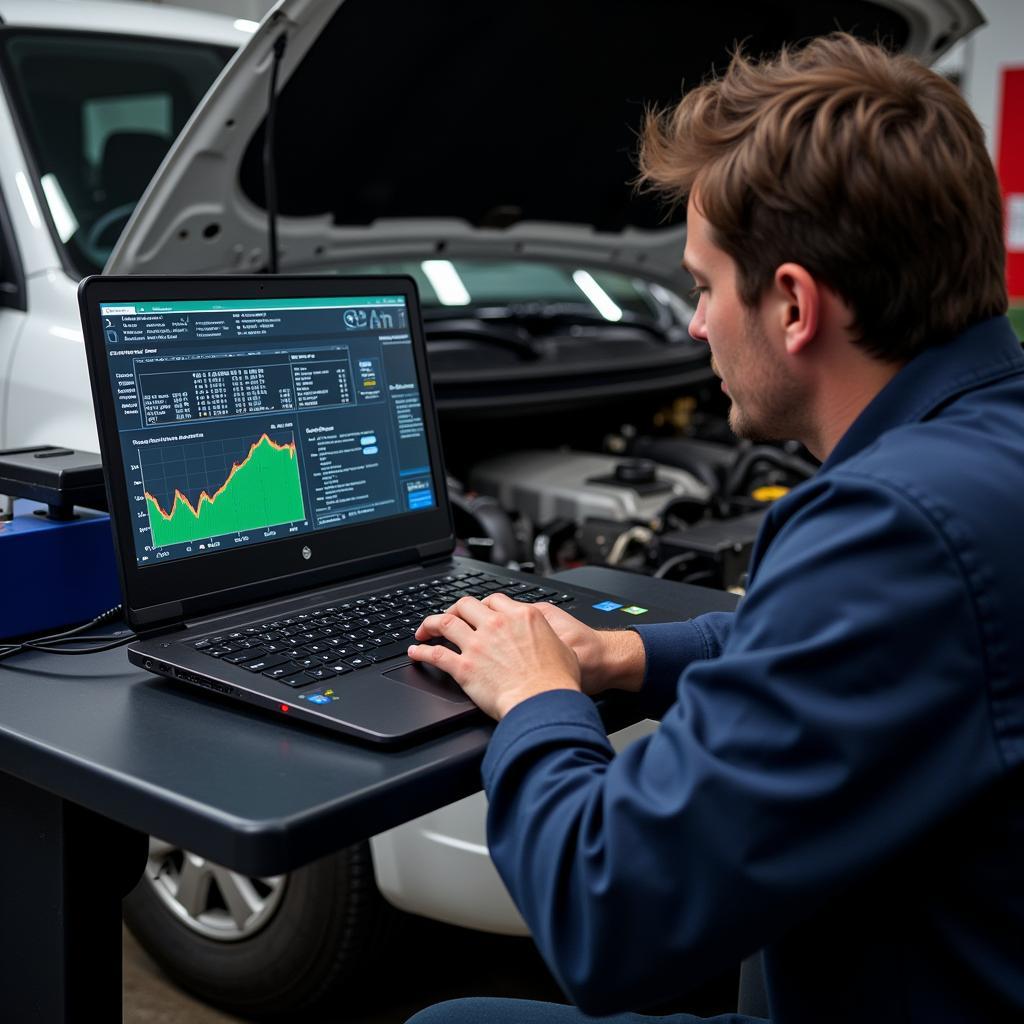Understanding what’s happening under the hood of your diesel car can feel like trying to decipher a foreign language. A sudden drop in fuel efficiency, a concerning rattle in the engine, or the dreaded check engine light illuminating your dashboard can leave you feeling lost and frustrated. Thankfully, a diagnostic code reader for diesel cars can act as your personal translator, providing invaluable insights into your vehicle’s health and performance.
Why Are Diagnostic Code Readers Essential for Diesel Cars?
Modern diesel cars are equipped with sophisticated onboard computer systems, known as Electronic Control Units (ECUs), which monitor and manage various aspects of the engine and emissions systems. When a malfunction occurs, the ECU generates a specific diagnostic trouble code (DTC) and stores it in its memory. A diagnostic code reader acts as the bridge between your car’s computer and you, allowing you to retrieve and interpret these codes.
Unlike older diesel engines, which often relied on mechanical fuel injection systems, newer models incorporate electronically controlled systems, making a code reader indispensable for accurate diagnosis and repair.
Choosing the Right Diesel Car Diagnostic Code Reader
With a wide array of diagnostic code readers available, selecting the right one for your needs is crucial. Here are key factors to consider:
1. Vehicle Compatibility: Ensure the code reader you choose is compatible with your diesel car’s make, model, and year. Some readers are designed for specific brands, while others offer broader compatibility.
2. Code Reading Capabilities: Determine what type of codes the reader can access. Basic readers may only display generic OBD-II (On-Board Diagnostics) codes, while more advanced options can access manufacturer-specific codes, providing more detailed insights.
3. Live Data Streaming: This feature allows you to view real-time data from various sensors in your car, such as engine RPM, coolant temperature, and fuel pressure. Live data is invaluable for diagnosing intermittent issues and monitoring sensor performance.
4. Additional Features: Some code readers offer additional functionalities, such as:
- DTC Definitions: Provide descriptions of the retrieved codes, eliminating the need for separate lookups.
- Code Clearing: Allow you to erase codes after repairs, resetting the check engine light.
- Freeze Frame Data: Capture a snapshot of the engine’s operating conditions at the time a code was stored, aiding in diagnosis.
Understanding and Using Diagnostic Trouble Codes
Once you’ve connected the code reader to your diesel car’s OBD-II port, usually located under the dashboard on the driver’s side, you can retrieve the stored DTCs. These codes typically consist of a five-character alphanumeric sequence, such as P0401 (EGR Flow Insufficient).
While a code reader can provide the code itself, it’s crucial to consult reliable sources for accurate interpretations and repair guidance. Online databases, repair manuals, and experienced mechanics can help you understand the code’s meaning and the potential causes of the problem.
 Mechanic analyzing diagnostic data on a laptop
Mechanic analyzing diagnostic data on a laptop
Beyond Basic Code Reading: Advanced Diagnostics
For more complex issues or for those seeking a deeper understanding of their diesel car’s performance, advanced diagnostic tools and software offer a comprehensive solution. These professional-grade options provide:
- Bi-directional Control: Allows you to interact with and test various vehicle components, such as actuators and solenoids.
- ECU Programming and Coding: Enables you to update software, adjust settings, and perform other advanced functions.
- Guided Troubleshooting: Provides step-by-step instructions and flowcharts to assist in diagnosis and repair.
Conclusion: Empowering Diesel Car Owners
A diagnostic code reader is an essential tool for any diesel car owner, providing a window into the complex workings of your vehicle’s electronic systems. By understanding and utilizing this technology, you can take control of your car’s maintenance, identify potential problems early on, and save on costly repairs.
Ready to unlock the secrets of your diesel car? Choose a reliable diagnostic code reader and empower yourself with the knowledge to keep your engine running smoothly for miles to come.
FAQs
1. Can I use a gasoline car code reader on my diesel car?
While some basic OBD-II code readers may work on both gasoline and diesel vehicles, it’s recommended to choose a reader specifically designed for diesel engines to ensure compatibility and access to manufacturer-specific codes.
2. Will clearing the codes fix the problem?
Erasing the codes will only temporarily turn off the check engine light. It’s crucial to address the underlying issue that triggered the code to prevent further damage and ensure proper vehicle operation.
3. Can I diagnose all car problems with a code reader?
While a code reader is a valuable diagnostic tool, it may not detect all mechanical issues. Some problems, such as worn-out parts or fluid leaks, may not trigger diagnostic codes.
4. Do I need to be a mechanic to use a code reader?
Basic code readers are user-friendly and can be easily operated by car owners with minimal technical knowledge. However, understanding the retrieved codes and performing repairs often require mechanical expertise.
5. Where can I get help interpreting diagnostic trouble codes?
Online databases, repair manuals, automotive forums, and experienced mechanics can provide valuable assistance in interpreting DTCs and guiding you towards a solution.
Need help with car diagnostics? Contact us on WhatsApp: +1(641)206-8880, Email: [email protected]. Our team is available 24/7 to assist you.

Leave a Reply